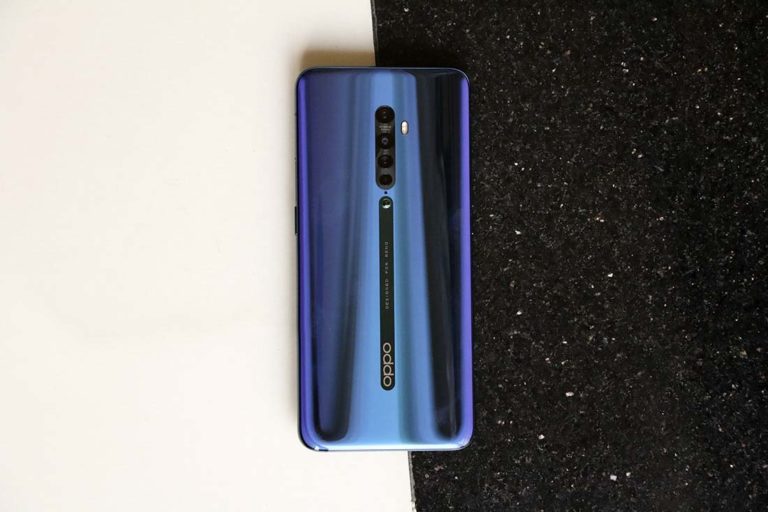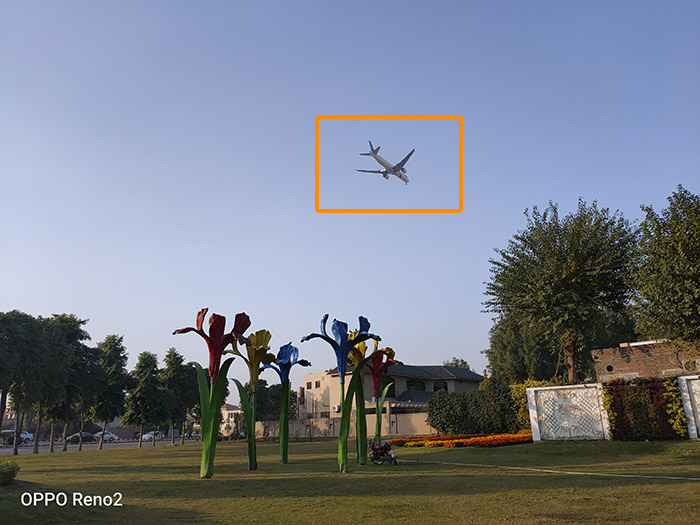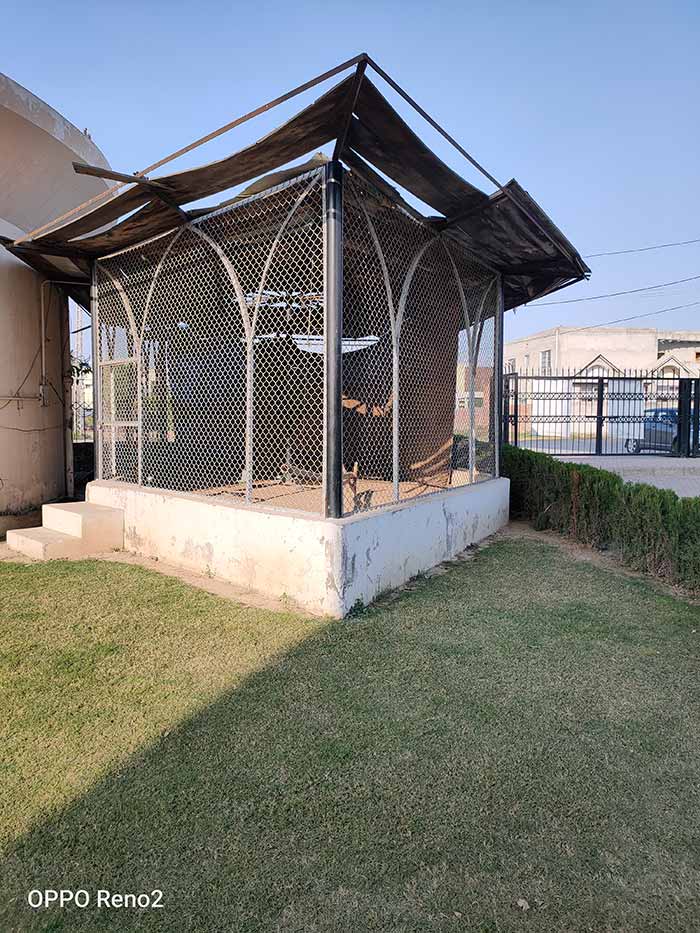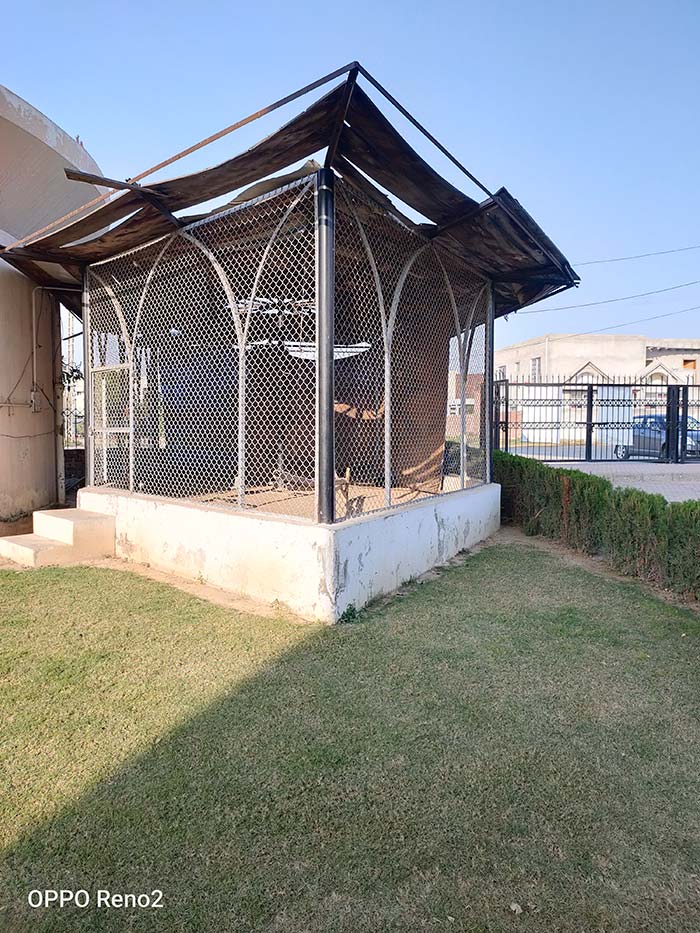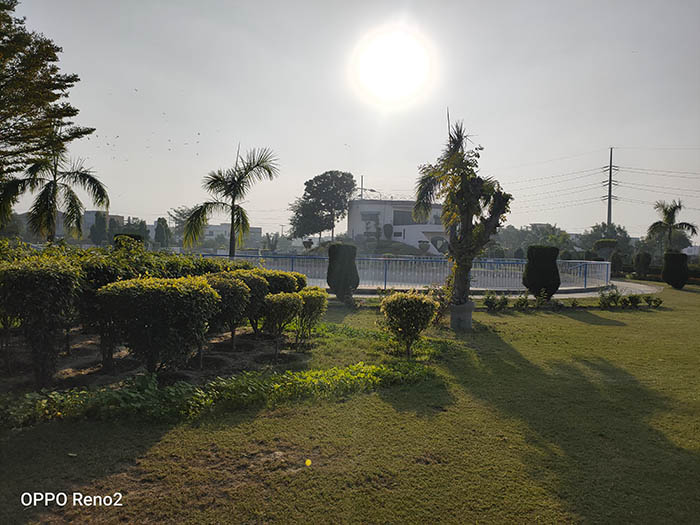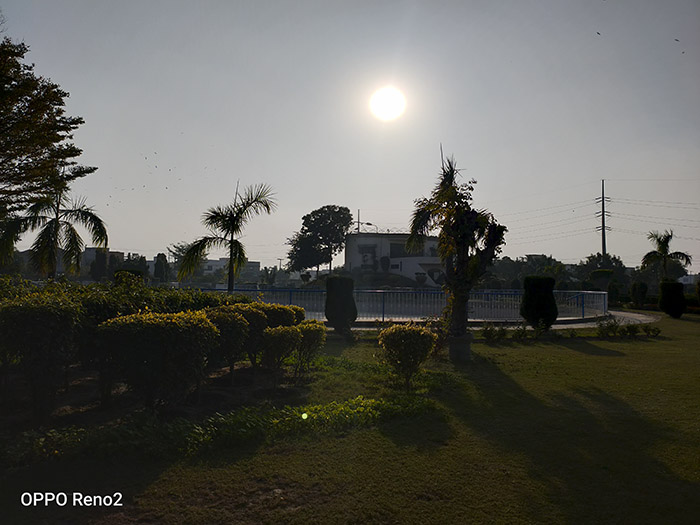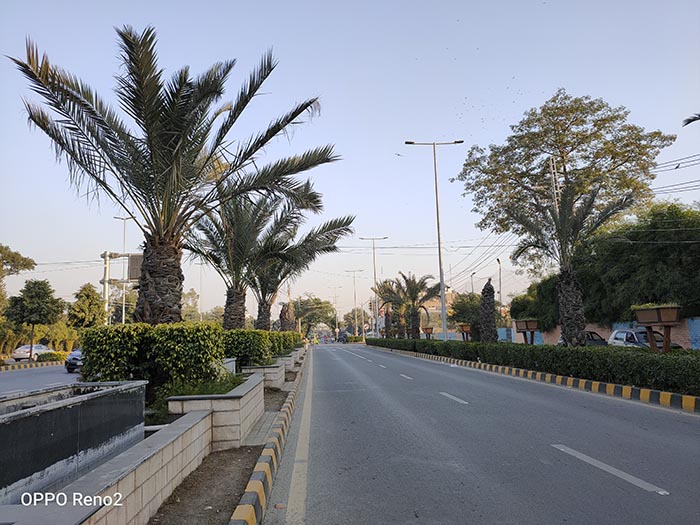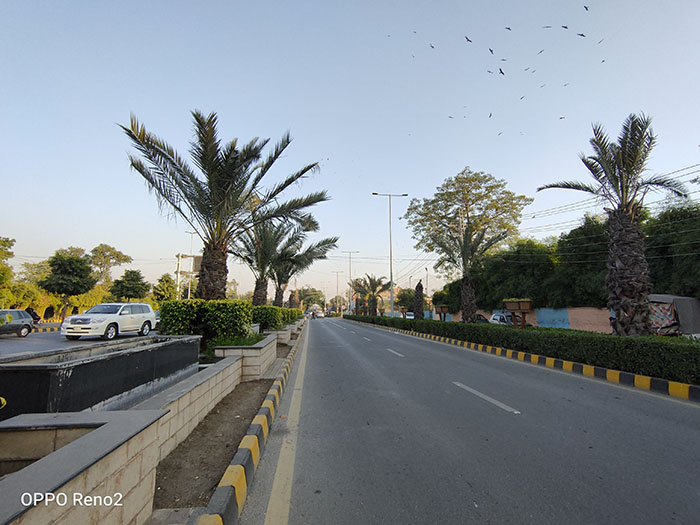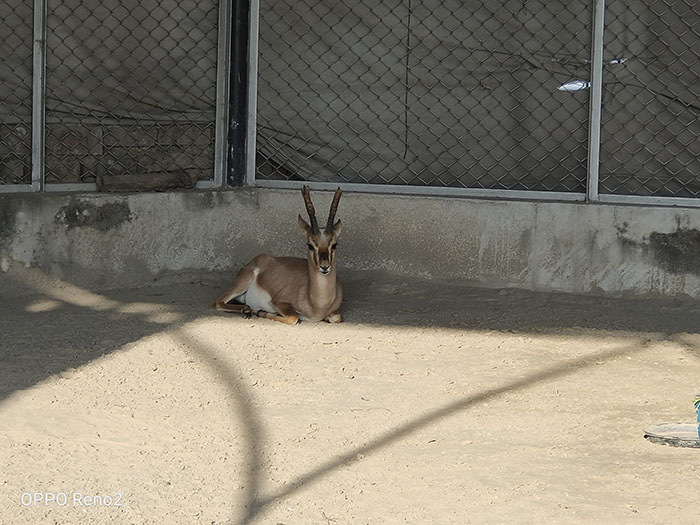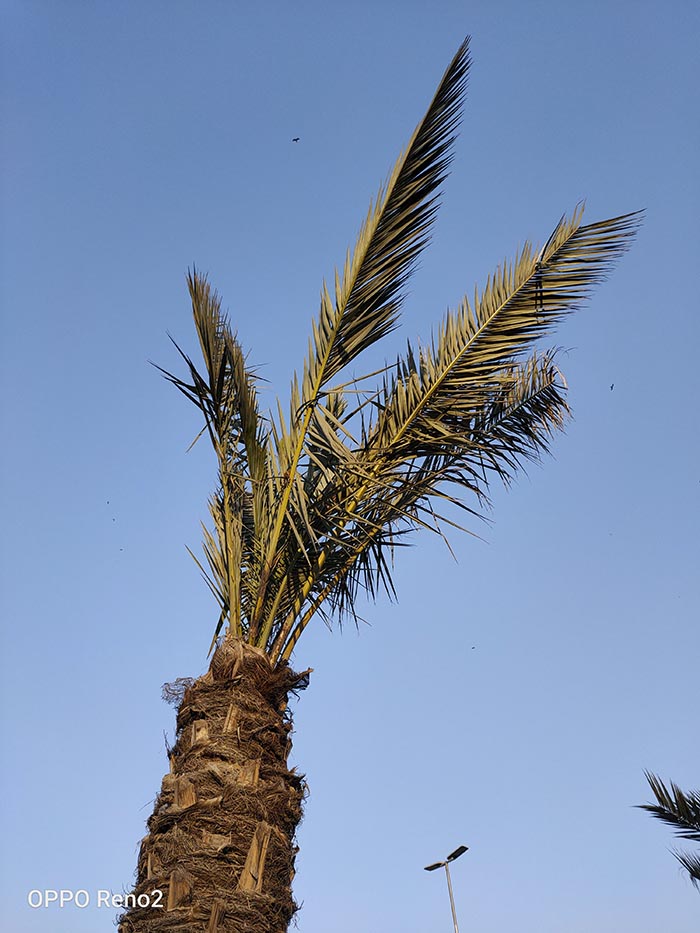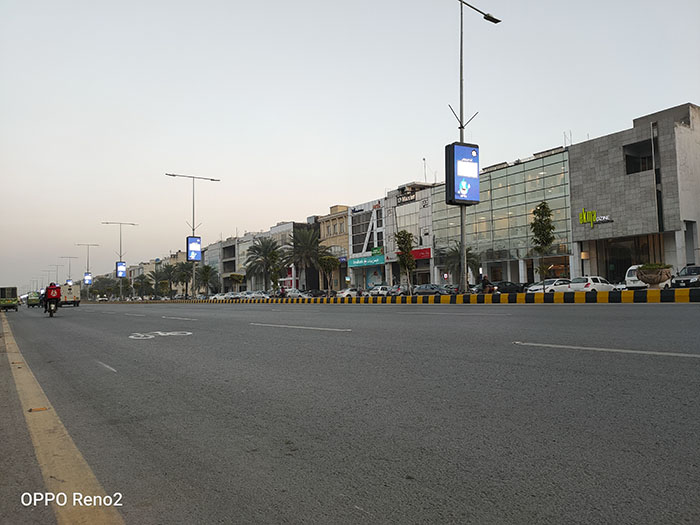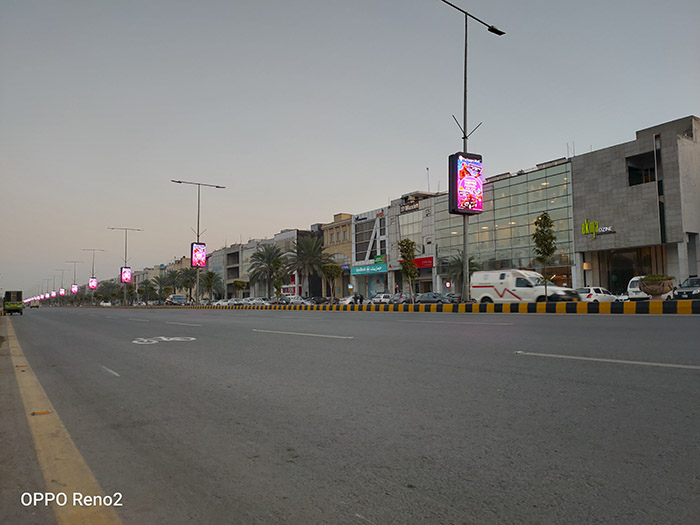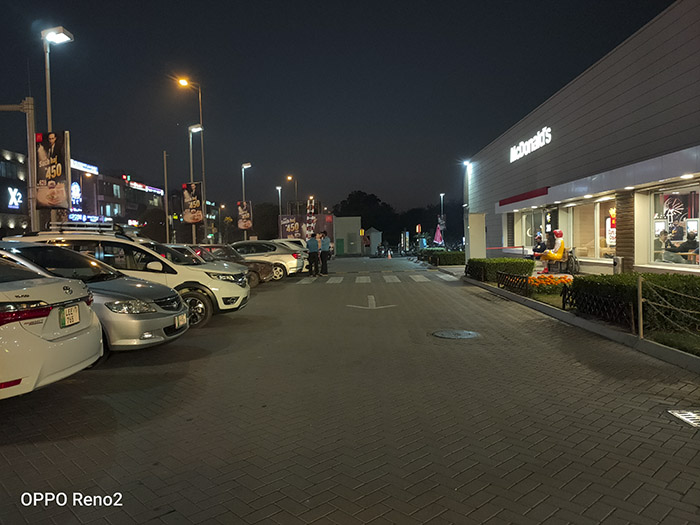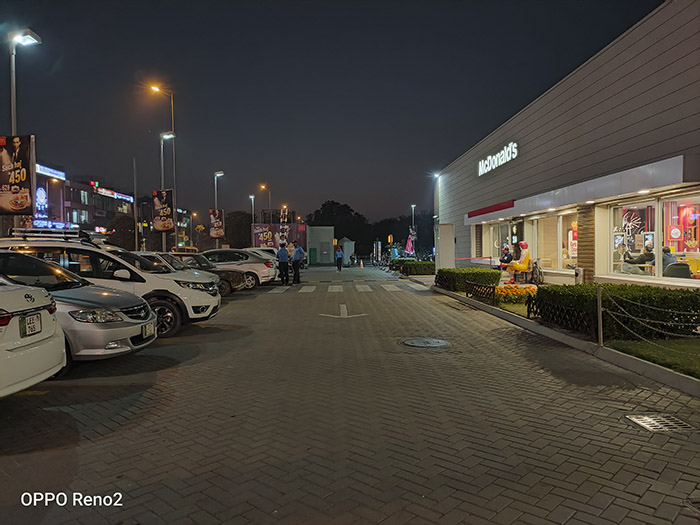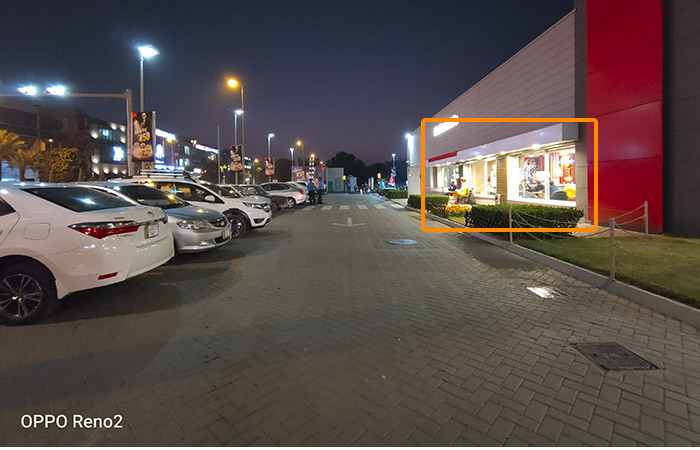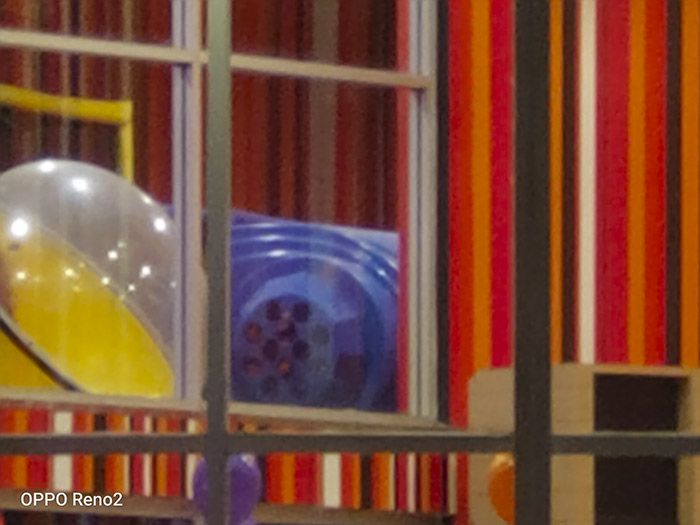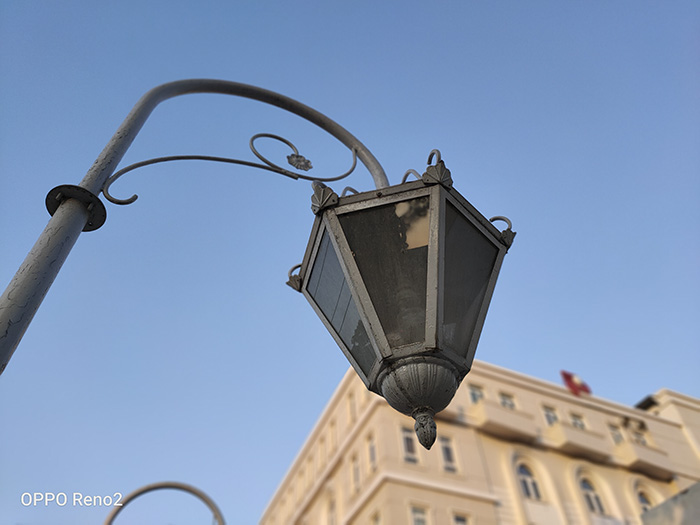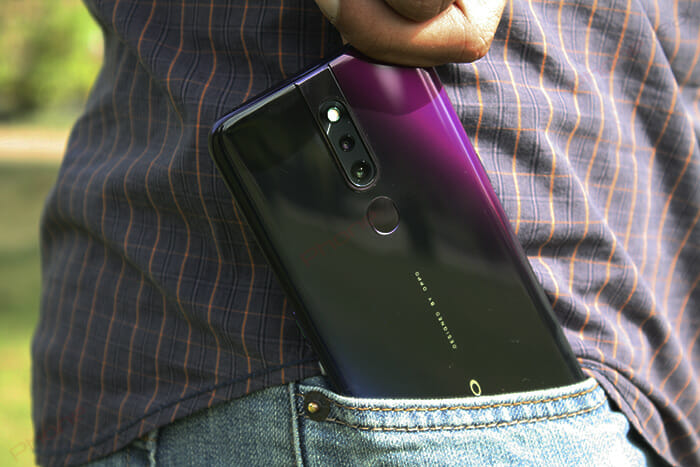Oppo brought the Reno series in the second quarter of 2019. Although we are expecting Reno 3 now, Oppo Reno2 is still the high-end offering in the Reno series at the moment.
The first version, standard Reno, was launched along with the high-end variant Oppo Reno 10X zoom that mainly focused on photography isn’t accompanying the second iteration of the phone. So they are only limited to the smaller variant Reno2 F and premium variant Reno 2 this time. We earlier reviewed Reno2 F, which is equally beautiful in looks like the bigger sibling, but it seemed more like an overpriced device.
Reno 2’s primary selling point is the quad-camera setup and pop-up selfie camera module that is a shark fin design. Oppo has added some very interesting camera features that are supportive of video making. It also hosts the Qualcomm Snapdragon 730G SoC chipset to power the handset.
Whether this phone has what it takes to be the best mid-ranger, let’s find out below.
Oppo Reno2 specs
- Display: 6.5 Inches AMOLED, 1080 X 2400 Resolution
- OS: Android 9.0, Color OS 6.1
- Chipset: Qualcomm Snapdragon 730 G
- RAM / ROM: 8 GB / 256 GB
- Camera (rear): 48MP + 13MP + 8MP + 2MP
- Camera (Front): 16MP pop-up
- Battery: 4000 mAH
Design and Display
Oppo Reno2 isn’t much different in design than the original Reno and the Reno 10X zoom if you have had a chance to look at them. So the novelty starts to wear out if you are jumping from the previous version; however, the new model boasts a quad-camera setup on its rear side that is a major difference from than dual-camera setups of the previous two base models.
It’s a two-tone glass finish on the rear side that shines like a premium phone, which is also prone to fingerprints and smudges. Protected by the Gorilla Glass 5, this 3D curved back panel is jam-packed in the middle area where four cameras are present in the top portion, and an Oppo branded strip runs underneath. Everything is flat, and there is no camera bump like the Redmi Note 8 Pro for spoiling the overall experience. Instead, all four sensors rest behind the glass surface. There is, however, an O-Dot, also present in the earlier Reno versions, enclosed in the branded strip that keeps the phone a little elevated from the surface when lying flat mainly to keep the lens area safe from scratches.
We have the Ocean Blue color variant, though, it comes in Luminous Black and Sunset Pink as well, we believe Black and Blue variants look cooler than the third one.
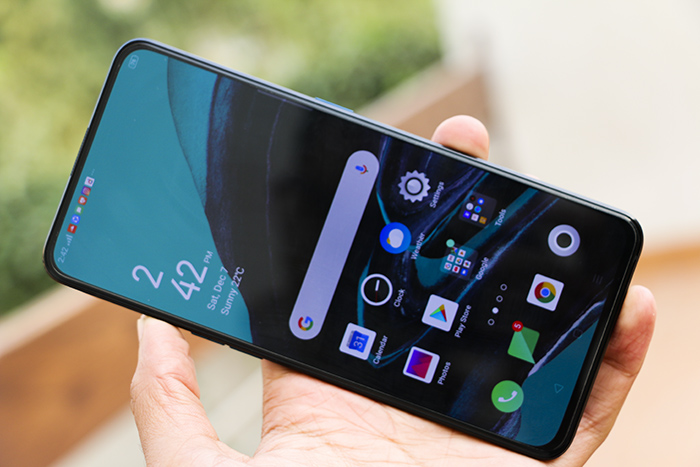
Other than the quad-camera, the primary design feature is the shark-fin design selfie camera that pops up in a blink of an eye. Oppo says it takes 0.8 sec to swivel out at 11 degrees. We can’t measure precisely this short interval, but it is speedy, and that helps a lot at the time of facial unlock. There is a built-in dropping mode that retracts the lens to avoid accidental damage in case the phone falls freely. This is not a usual popup mechanism that we witnessed in Reno 2Z, F11 Pro, and A9 2020, instead, it is a very artistic design that has made possible the spotless 6.5 inches screen on the front side that falls in between Oppo Reno’s 6.4 inches and Reno 10X zoom’s 6.6 inches.
There is no intruding notch, and you get 401 pixels density, which was 387 PPI and 402 PPI in the case of Reno 10x zoom and Oppo Reno, respectively. However, Reno 2 offers an aspect ratio of 20:9 against 19.5:9 of the rest of the two earlier variants.
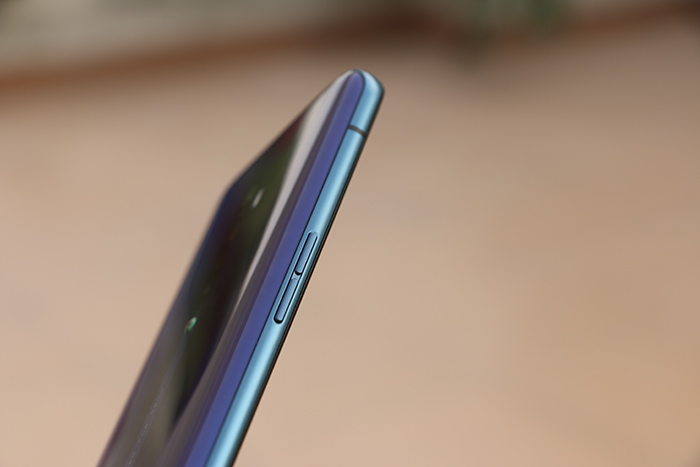
The front has really tiny bezels, and only at the bottom does it feel a little bigger, which is also not a big turn-off. Oppo has placed two separate volume keys on the left side, whereas the power key along with the SIM tray is locked on the right side of the phone. A small green strip on the power key makes it prominent and beautiful. Overall the tactile beauty of the keys is fantastic.
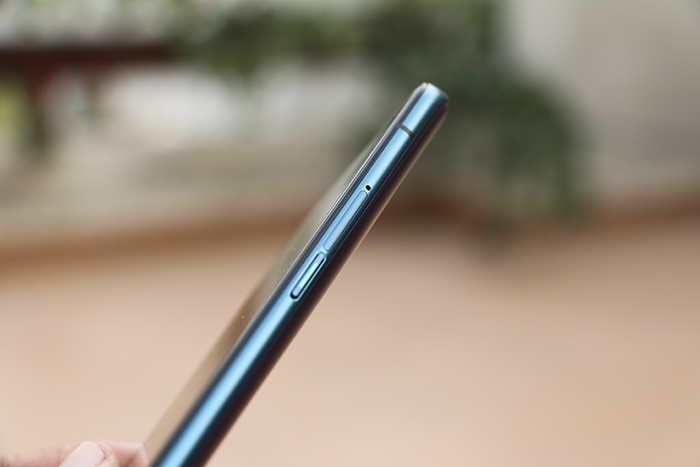
While the top holds the motorized camera and the secondary mic, the bottom offers the 3.5 mm audio slot, a primary mic, a USB Type-C charging slot, and the speaker grille right next to it.
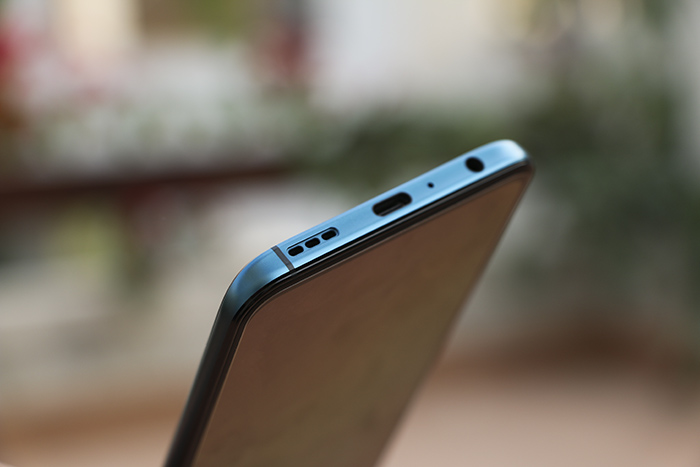
Oppo Reno 2 features a Gorilla Glass 6 protected AMOLED screen offering 1080×2400 px resolution, which produces a quality display and goes as high as 800 nits in brightness. It is sharp, colorful, and very bright at its mid-levels. We did not face a problem with any type of content both indoors and outdoors; however, some darker scenes in the movie like Captain Marvel may compel you to find some shades if you are out on a sunny day, and here I am talking about quite dark scenes.
There are a couple of display settings to customize the visual experience further though they are limited to only a handful of options.
To sum it up, it’s a massive phone with an immersive display, and to be honest, it can’t be handled with one hand all the time. You must use the second hand for several tasks.
Performance and Battery
Oppo Reno 2 comes with Snapdragon 730G, 8 GB RAM, and 256 GB internal storage. On the software side, Android 9.0 and ColorOS 6.1 run the show and are responsible for all the user interaction.
Although, it looks like an overpriced device for Snapdragon 730G, however, the phone is adequate for most of the resource-intensive tasks.
On AnTuTu, it scored 260374, which is decent, but it is behind 288187 of what the Redmi Note 8 Pro produced with Helio G90T. Nevertheless, it left behind Xiaomi’s device in a few areas.
During our tests, we didn’t note any sluggish behavior while it played everything with ease we threw at it. Only on a few occasions, we noticed it show the slightest lag while switching between Call of Duty and PUBG after an hour-long session, which is not a serious flaw for a phone that processes everything normally.
Oppo Reno 2 features a 4000 mAh battery and a VOOC Flash charge 3.0. According to the claims of the company, it gets charged 51% in 30 minutes. The result is almost similar during our test, but for the full charge, it took 1 hour and 17 minutes.
Our video playback drained the battery in 12 hours and 47 minutes, which is marginally less than what the company claims. You can have a look at the following video for understanding the battery drain and charging activity.
On average, it can consume between 15 – 16% in an hour with common practices; however, a heavy gaming session can eat up to 24% of the battery, which is really quick. In our four-hour battery test, different apps on the mobile data took away 66% of the battery. Have a look at the following graph for the results.
Reno 2 also claims to conserve power efficiently with the help of its Neural Network Processing, but Oppo phones have this common trait of less than desired battery optimization. However, this phone is among Oppo’s better-performing devices, even better than last year’s F11 Pro and Reno series.
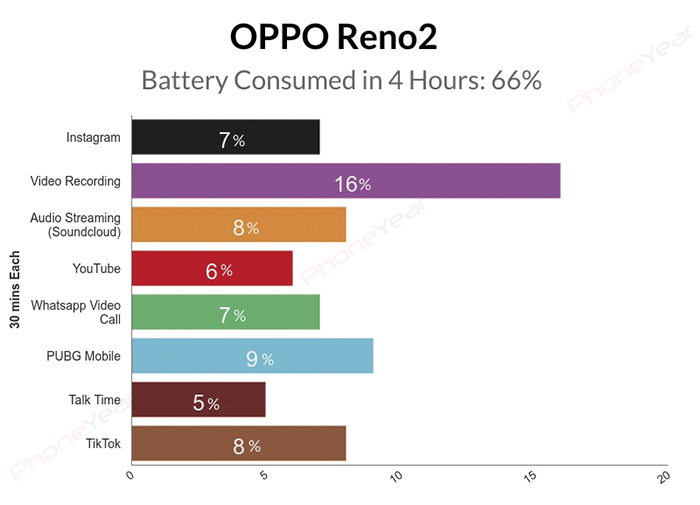
The fast charge can make up to some extent; you definitely need to recharge the phone at the end of the day.
Camera
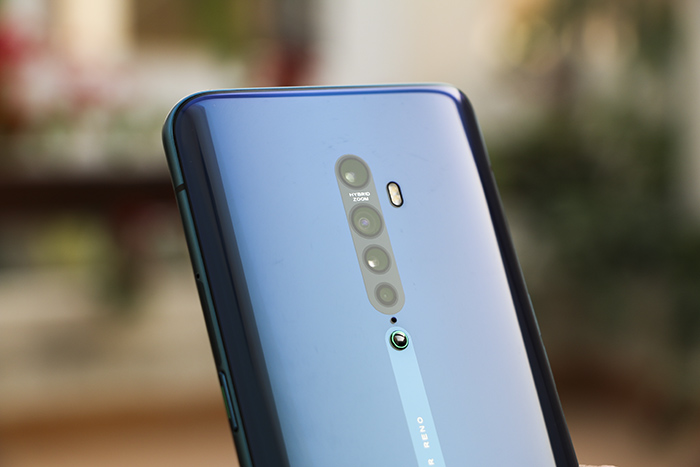
Oppo has been putting a lot of effort into garnishing the selfies with huge megapixels cameras on the front. With the Reno series, the rear cameras have also taken the attention of its designers, or perhaps this series deliberately focus on the camera prowess. Don’t get confused with the triple camera setup of Reno 10X zoom since it was a flagship variant and never saw its sequel as of yet.
Oppo Reno 2 is a considerable upgrade from the previous simple version that only had two lenses on the rear side. The four lenses comprise Sony’s IMX 586 sensor – a 48MP wide-angle primary lens, 8MP ultrawide-angle, 13MP telephoto, and 2MP mono sensor mainly for portraits.
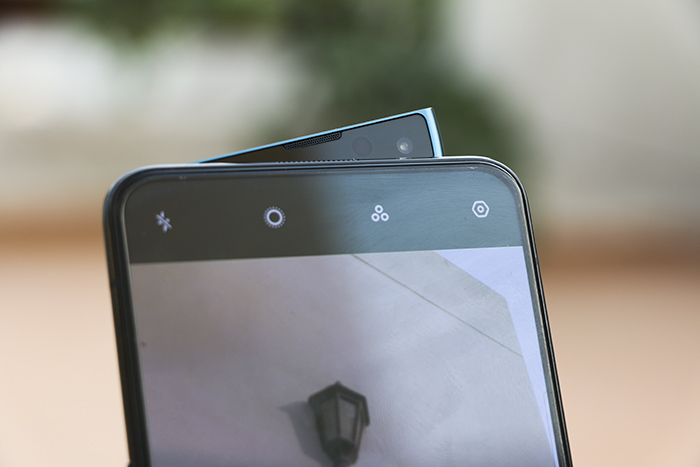
You get a 2x optical zoom and 5x hybrid zoom that is a result of combo processing of 48MP, 8MP, and 13MP lenses in most of the scenarios.
The primary lens is also equipped with AI Noise Reduction – for smoother pictures, OIS, and EIS, which is very active in the video-making section. Oppo has upgraded the video making with the ultra steady mode that works on 1080p 60fps videos and video dynamic zoom for 1080p videos at 30fps. A sound focus feature amplifies the sound as you zoom in.
Reno 2’s rear camera can record up to 4K videos, but stabilization is not available at this resolution, unfortunately.
Day Time
Oppo Reno 2 boasts a much better camera performance than standard Reno 2 F. Its standard mode catches 12MP shots. Oppo phones usually take very contrasty photos, even their lower mid-range phones such as A9 2020 religiously follow this principle. Reno 2’s performance in the daylight is fantastic.
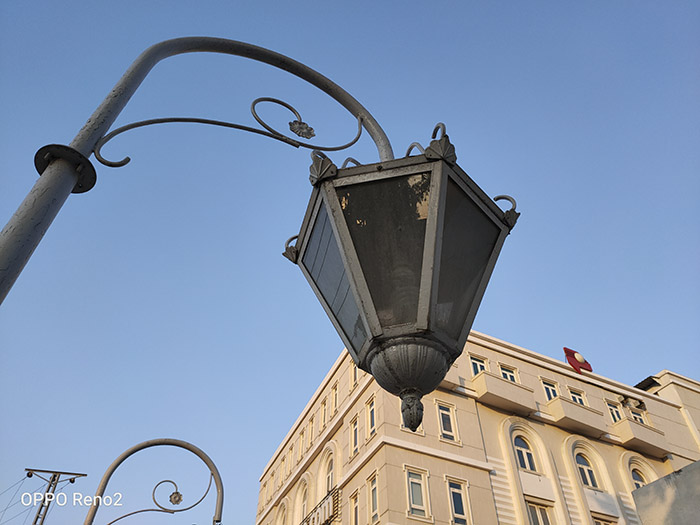
The colors are bold and punchy, giving an excellent life to the scene. However, we noticed a higher exposure level in several images under the harsher sunlight, which is only a slight variation that does not spoil the scene. Having said that, the images are sharp, and the details are exquisite. Even the moving objects are captured reasonably well.
Like any other Oppo phone, the Dazzle Color mode further enhances the colors that look tempting in normal light, but under the harsher lighting conditions, the vividness goes beyond the limit, giving a more artificial look.
The HDR is helpful sometimes, but it is inconsistent most of the time, takes little shaky photos, and shows minimal dynamic range.
Oppo Reno 2 does quite well with ultra-wide-angle and macro shots since both use the same 8MP lens. We didn’t notice any significant issues with the macro scene. As with standard photos, close-up shots look a little brighter, but the details remain intact, and the subject maintains the natural color. Interestingly, in contrast to little overexposed standard shots, the ultrawide lens lowers the exposure level a bit, giving the subject a more natural look. Unlike most camera phones, the details are not severely compromised, although a loss is noticeable, it is very acceptable.
Although a little grainy, Oppo Reno 2 maintains a very good detail at 2x that further suppresses at 5x since different lenses work together, and post-processing eliminates most of the noise. The images are noisy and pixelated at 20x digital zoom, which is more like a cropped version of the standard mode, but they are acceptable in most cases depending upon the lighting condition.
Night Time
In the low light (at sunset), the standard mode captures adequate details even of the far-off objects. Although the noise level increases with the standard mode, the colors remain reasonably well and exposure well within the limit. On the other side, as we mentioned earlier, the HDR mode behaves a little strangely. It surprisingly loses the details and sharpness while lowering the colors and contrast.
However, at night, the result is quite grainy with the standard mode. Pictures are less sharper, and details look compromised along with the colors. Nevertheless, the images are acceptable unless seen on a bigger screen at actual size. Reno’s dedicated night mode offsets the disorder, which boosts up the lost details, corrects the colors, and the contrast, though, pictures look warmer. The post-processing diminishes the noise level and the result seems nearly noise-free.
For the ultrawide lens, the software processing acts similarly for eliminating the noise, but it falls short of handling the details. Images look washed out and overexposed, notably, the light sources are poorly treated.
The phone can handle the 2x and 5x shots decently for well-lit subjects, and even at 20x, it successfully grabs reasonable details, though, images become flatter.
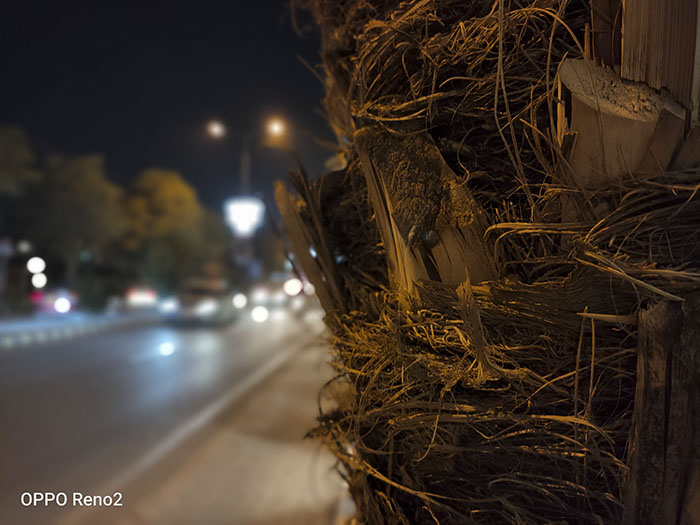
Interestingly, the bokeh mode (aperture) works at night for well light subjects. It can still distinguish decently between the subject and the background.
Selfies and Portraits
Reno 2’s 16MP selfie lens is powerful, like always. During the day, it shoots a little brighter selfies where the background appears overexposed, and the subject appears artificially smoother, but HDR mode looks more promising in the case of the front camera, which enhances both foreground and background alike. However, the portrait mode in the front camera works better by grabbing more facial details and keeping the skin tone almost natural. Both the modes, standard, and portrait, offer tons of beauty enhancement tools that do not overdo in the name of AI like in Vivo S1 and Vivo S1 Pro.
Verdict
Being a pricey phone, Oppo Reno 2 is a much-balanced device that delivers in almost every area. Its amazingly catchy design language, a reasonable rear camera setup, the shark fin selfie camera that can take awesome selfies, VOOC 3.0 fast charging, upgraded ColorOS, and decent gaming performance are a few of the most desirable features to lure anyone.
If you are on the budget and also wish for a better camera and gaming quality and if looks are a lesser temptation for you, Xiaomi’s Redmi Note 8 Pro could be another consideration at a very reasonable price.

